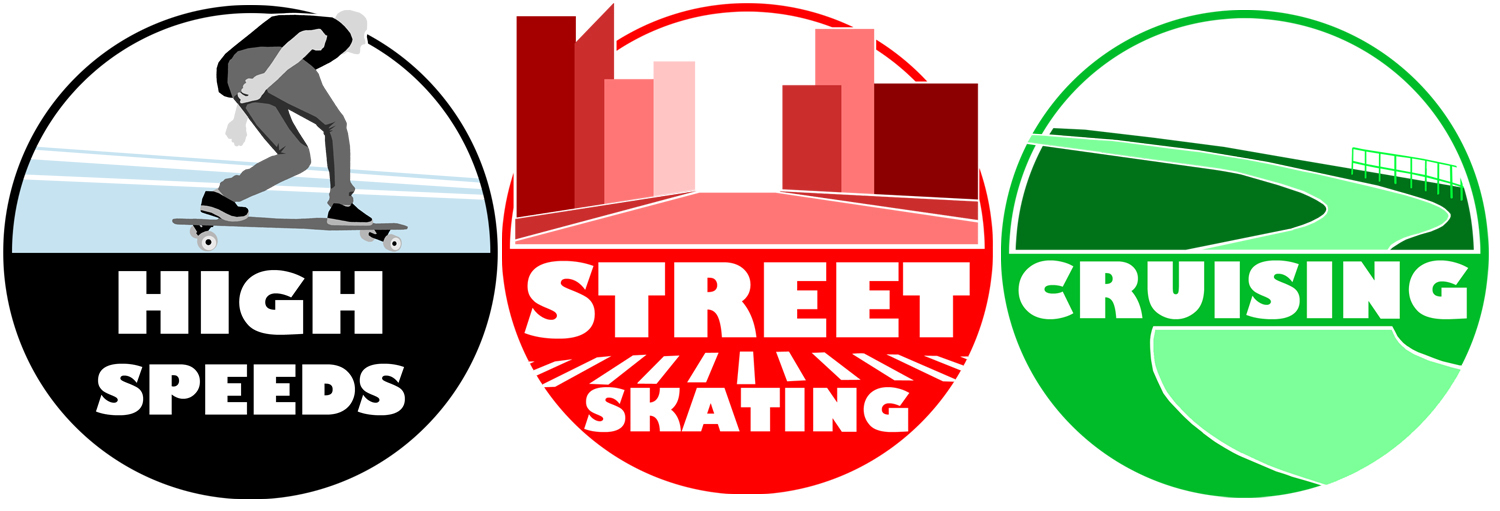What is a skateboard deck?
The deck is the main thing people think of when they hear skateboard. It is the wooden “board” that the skater stands on. Decks have features that will make them ride a specific way. Understanding the features of a deck will help guide you along the variety of styles, to the deck that is perfect for you.
Note: This information varies slightly for longboards. Please check out our buyer's guide for Longboard decks for more info.
Deck Features:
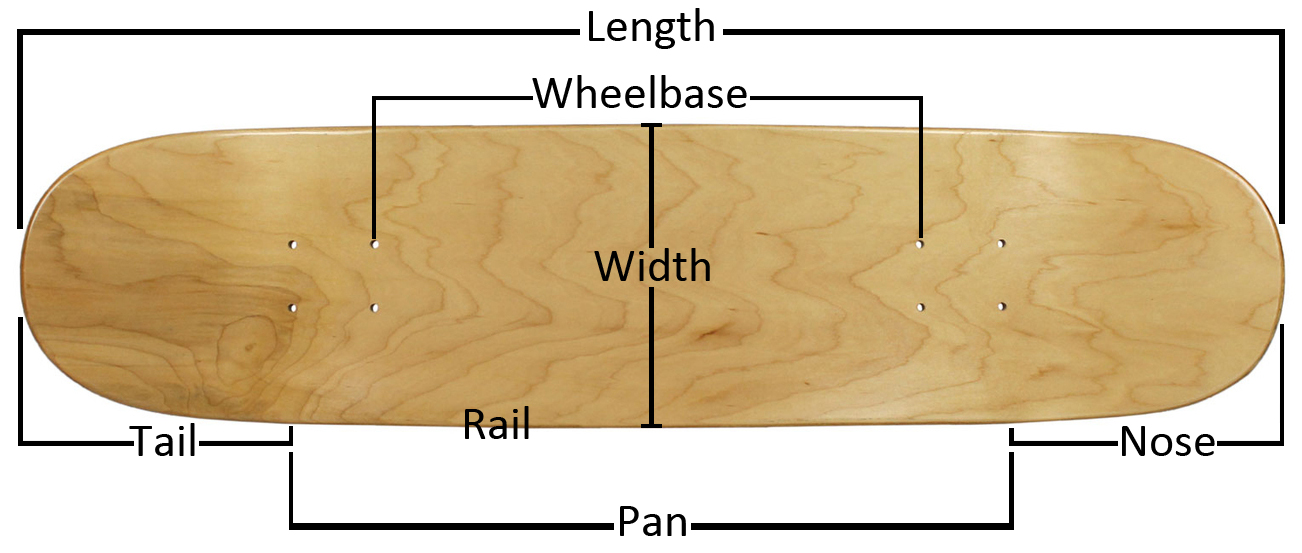
Width
This is the “size” of a skateboard deck. Decks have varying widths and lengths; however, width is the main focus. The average width is about 7.75” – 8.25”. The width of a modern deck usually features some type of concave, which helps lock your feet in place.
Narrow: 6.0" – 7.75"
Medium: 7.9" – 8.25"
Wide: 8.5" – 10.0"
Length
Length is the distance from the nose (front tip of deck) to the tail (back tip of deck). The common lengths are 28” – 32”. This measurement doesn’t receive much attention because the more important measurement lengthwise is the wheelbase.
Wheelbase
Wheelbase is the distance between a deck’s inner mounting holes. This distance will show you how far apart your trucks/wheels will be from each other. The average wheelbase is from 13” – 15”. Most decks will feature one set of mounting holes, however, some feature multiple mounting holes so the skater can decide what size works better for them. Smaller wheelbases are more responsive, and wider wheelbases are more stable at higher speeds.
Mounting holes
Mounting holes are the pre-drilled holes in the deck where you mount the trucks to the deck with hardware. Most of the time there are 8 holes (4 on the tail end, 4 on the nose end), however, there is occasionally more for different mounting options.
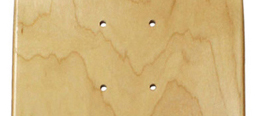
Plys
Plys are the layers of wood pressed together to make a deck. To give decks more flex so they don’t snap easily, they are manufactured with layers of wood with glue in between each layer. The most common wood used in skateboard decks is Canadian Maple. The most common amount of ply is 7ply, and most decks don’t go past 9ply.

Nose and Tail
The nose is the “front” of a deck and the tail is the “back”. It can be difficult to tell which end is which, but most decks have graphics on them which can help you tell them apart. Both ends feature a kick (upward curve on the end of a deck). The nose usually features a steeper kick and the tail features a more mellow kick. A steeper kick will give you more pop when doing aerial based tricks.

Rails
Rails are the edges along the length of the deck. Rounded rails are the most common because they are great for flip tricks. Sharper rails are better for someone who wants to help keep their feet in place while sliding or carving.
Concave
This is the curve that runs along the width of a deck. There a variety of concave shapes but they usually curve upward on the rails. The concave helps lock your feet in place. Concaves also help with turning. A steep concave will be more noticeable on the feet and a mellow concave will feel more flat.
Deck Styles:

There are different styles of decks made for different styles of skating.
Shortboard
Shortboard decks are the most common type of deck now days. This is what most younger skaters think of when they hear skateboard. Its shape resembles a wide popsicle stick and its size range is usually 7.6” – 9” (width) x 29” – 33” (length). The industry standard for this style is 7plys of Canadian Maple. They are usually symmetrical and feature an upward nose and an upward tail. This style of deck is designed for getting airborne and performing tricks. This style is the most versatile as far as skating both parks and streets, while still being able to perform all the tricks the pros perform. Most modern pro skaters have shortboards as their signature decks.
To see what shortboard decks we have in stock, click here
To see what shortboard completes we have ready to ride, click here

Old School
Like that name alludes, this is the older style of deck that was more common in the 80s and very early 90s. This is the style that older skaters used to ride. Many of the popular graphics from back in the day are reproduced to keep the history and culture going for the generations that missed out on that era. The shape is usually a wider deck, about 9” – 10” (width) x 28” – 32” (length). They are usually flat, occasionally featuring a kicktail or mild concave. They usually feature a 7ply construction. Great for skating pools and cruising around. This style is sometimes called Cruisers. Old school decks are usually cruisers but not all cruisers are old school.
To see what old school decks we have in stock, click here
To see what old school completes we have ready to ride, click here
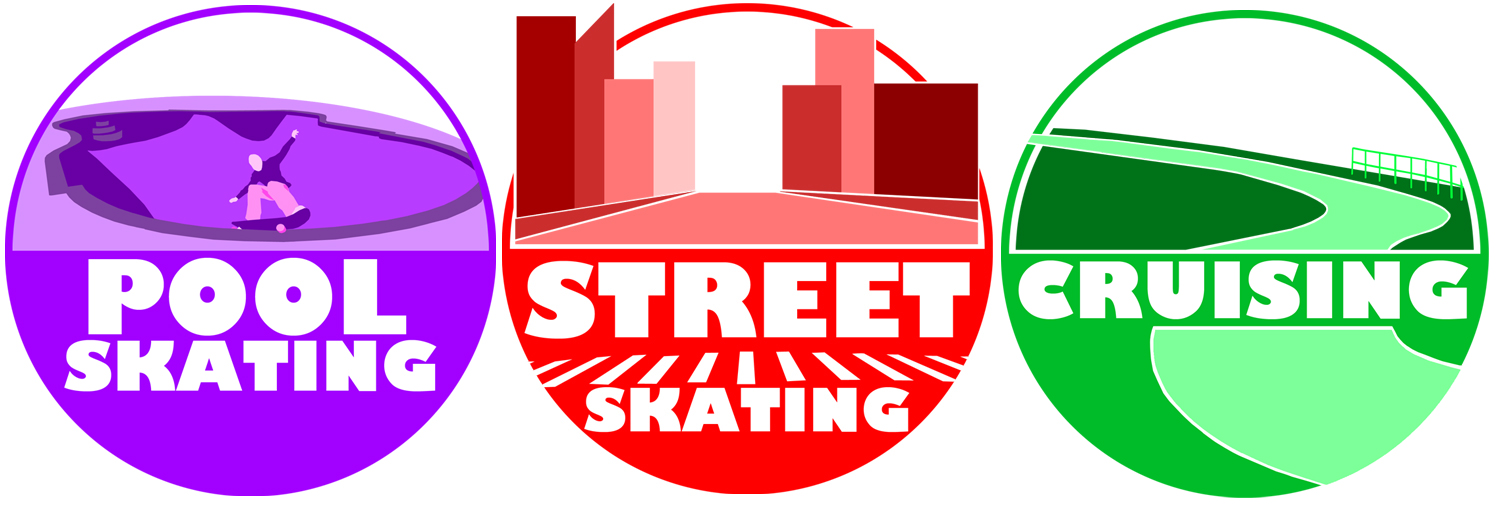
Cruiser
Like the name alludes, this is the style of deck that people use for cruising around on. This style comes in many shapes in sizes, with a wide variety of constructions. They do make cruiser decks but they tend to come pre-built (already assembled with all the components). A lot of cruisers imitate the style of old school decks, but there is a wide variety that don’t. Some examples of that are the cruisers made up of plastic or those that imitate the shape of longboard shapes (only shorter).
To see what cruiser decks we have in stock, click here
To see what cruiser completes we have ready to ride, click here
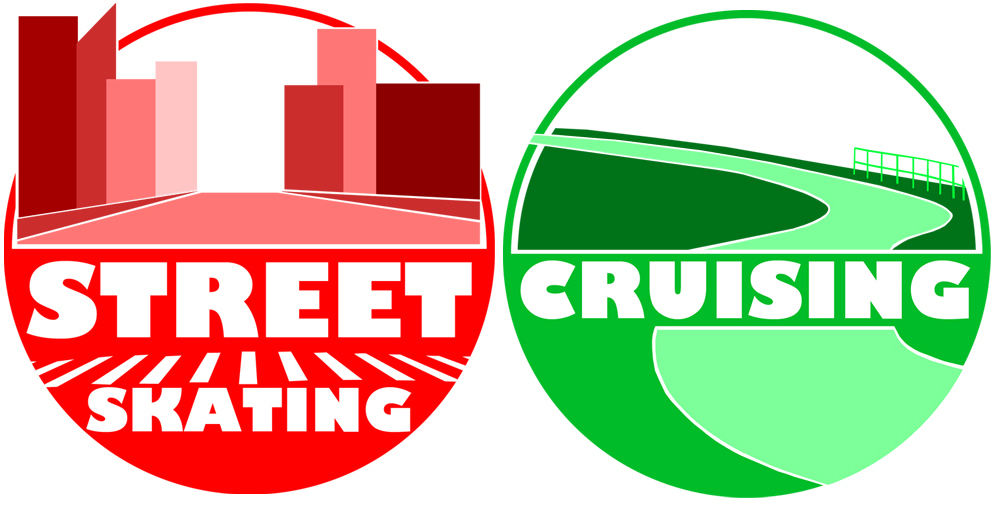
Longboard
This is the largest style of deck. Thicker and usually stronger than skateboard decks, these are great for cruising around, transportation, and reaching higher speeds. Longboarding is often considered its own category because it varies so much from skateboarding. This is a great choice for someone who isn’t concerned with doing tricks, but would much rather cruise around town or trails. Longboards come in a variety of shapes and styles. For more details about longboards please refer to the Buyer’s Guide for Longboard Decks.
To see what longboard decks we have in stock, click here
To see what longboard completes we have ready to ride, click here
